Powder metallurgy bearings, also known as sintered or oil-impregnated bearings, are an essential component in countless mechanical systems. They are widely used in electric motors, household appliances, automotive systems, industrial automation equipment, and medical devices — essentially anywhere rotational motion and low-friction performance are required. Unlike conventional bearings produced by machining or casting, powder metallurgy bearings are made by compressing and sintering metal powders into precise shapes with controlled porosity. This unique structure gives them self-lubricating properties and excellent wear resistance, all at a competitive production cost.
This guide provides a detailed, engineering-focused overview of powder metallurgy bearings — from their internal structure and working principle to their manufacturing process, performance characteristics, and industrial applications. It aims to give engineers and technical buyers a deeper understanding of how these bearings work, how to choose the right type, and what factors to consider when integrating them into mechanical designs.
1. Structure and Working Principle of Powder Metallurgy Bearings
The fundamental difference between a powder metallurgy bearing and a conventional bearing lies in its internal structure. Powder metallurgy bearings are characterized by a porous metallic matrix — a network of interconnected microscopic pores formed during the sintering process. These pores typically make up 10%–30% of the total volume, depending on the specific material and application requirements.

1.1 Porous Structure and Self-Lubrication
The porosity of powder metallurgy bearings is not a defect but a deliberate design feature. After sintering, the pores are impregnated with lubricating oil under vacuum or pressure. This oil fills the pore network and remains trapped inside until the bearing is in operation.
As the bearing rotates and heats up, the oil is drawn to the surface by capillary action, forming a thin lubricating film between the bearing and the shaft. When the bearing cools down and stops rotating, the oil is reabsorbed into the pores, ready for the next cycle. This mechanism provides continuous, self-regulating lubrication throughout the bearing’s service life, eliminating the need for external lubrication systems in most cases.
1.2 Material Microstructure
The microstructure of a sintered bearing is typically composed of metallic particles bonded together by solid-state diffusion during sintering. Common base materials include:
-
Copper-based alloys: Often used for low to medium load applications, offering excellent thermal conductivity and good corrosion resistance.
-
Iron-based alloys: Provide higher strength and load capacity, suitable for heavy-duty and automotive applications.
-
Bronze (copper-tin) alloys: Balance between strength, wear resistance, and self-lubrication.
-
Stainless steel: Used in corrosive environments or where hygiene is critical (e.g., food processing or medical devices).
The combination of a porous structure and carefully chosen alloy composition gives powder metallurgy bearings their unique combination of properties: self-lubrication, dimensional stability, and cost-effective mass production.
2. Manufacturing Process of Powder Metallurgy Bearings
The manufacturing of powder metallurgy bearings involves a series of carefully controlled steps. Each stage influences the final properties, porosity, dimensional accuracy, and performance of the bearing.
2.1 Powder Selection and Preparation
The process begins with the selection of high-quality metal powders. These powders must have a controlled particle size distribution, typically ranging from 20 to 200 microns. The particle shape and distribution significantly affect the compaction behavior, porosity, and final mechanical properties.
In many cases, alloying elements are pre-mixed into the powder to achieve the desired material properties. Lubricants or binders may also be added to improve flowability and reduce friction during compaction.
2.2 Compaction
The prepared powder is poured into a precision die and compacted under high pressure (typically 200–800 MPa) using a hydraulic or mechanical press. This step forms a “green compact” — a solid but fragile preform with the approximate shape of the final bearing. The compaction pressure and die design determine the green density and uniformity, which directly affect the final porosity and strength.
2.3 Sintering
The green compact is then sintered in a controlled-atmosphere furnace at a temperature below the metal’s melting point (for bronze, typically 750–850 °C; for iron, around 1100–1200 °C). During sintering, metal particles bond together through solid-state diffusion, increasing mechanical strength and dimensional stability while preserving the interconnected pore structure.
Atmosphere control is critical — commonly used gases include hydrogen, nitrogen, or dissociated ammonia — to prevent oxidation and ensure consistent properties.
2.4 Sizing and Machining (If Required)
After sintering, the bearing may undergo sizing — a secondary pressing operation that improves dimensional accuracy and surface finish. In some cases, light machining (e.g., boring, reaming) is used to achieve tighter tolerances or special geometries. However, one of the key advantages of powder metallurgy is near-net-shape production, which minimizes the need for extensive machining.
2.5 Oil Impregnation
The final step is oil impregnation. Bearings are placed in a vacuum or pressure chamber filled with lubricating oil. The pressure difference forces oil into the interconnected pores, ensuring uniform saturation. The type of oil used depends on the operating conditions — mineral oils for general use, synthetic oils for high-temperature or high-speed applications.
3. Key Performance Characteristics
Powder metallurgy bearings are valued for a combination of properties that make them highly efficient, reliable, and cost-effective. Understanding these characteristics is essential for proper selection and design.
3.1 Porosity and Oil Capacity
Porosity levels typically range from 10% to 30% by volume. Higher porosity increases oil storage capacity and self-lubrication capability but reduces mechanical strength. Lower porosity improves strength and load capacity but may require more frequent lubrication. Engineers must balance these factors based on application requirements.
3.2 Friction and Wear Resistance
The self-lubricating nature of sintered bearings results in a low coefficient of friction, typically around 0.05–0.12 under normal operating conditions. The continuous oil film minimizes metal-to-metal contact, reducing wear and extending service life. For demanding environments, composite powders or solid lubricants like graphite or MoS₂ can be added to enhance wear resistance.

3.3 Dimensional Stability
Because powder metallurgy bearings are formed in precision dies and require minimal machining, they exhibit excellent dimensional repeatability. Thermal expansion coefficients and dimensional stability are predictable, allowing for tight fits and consistent performance even in variable temperature environments.
3.4 Noise and Vibration Reduction
The inherent porosity and oil film act as damping elements, helping reduce noise and vibration in rotating machinery. This property is particularly valuable in electric motors, fans, and household appliances where quiet operation is essential.
3.5 Load Capacity and Speed
While powder metallurgy bearings are not designed for extremely high loads or speeds, they perform well within their design range. Typical load capacities range from 5–25 MPa, and surface speeds can exceed 10 m/s depending on material and lubrication.
4. Applications of Powder Metallurgy Bearings
Powder metallurgy bearings are used in an exceptionally wide range of industries and mechanical systems. Their combination of low cost, self-lubrication, and maintenance-free operation makes them ideal for applications where conventional bearings would be impractical or too expensive.

4.1 Automotive Industry
-
Oil pumps and water pumps
-
Door hinges and seat adjusters
-
Alternators and starter motors
Here, sintered bearings reduce maintenance needs, handle moderate loads, and operate reliably over long service lifetimes.
4.2 Electric Motors and Home Appliances
-
Fan motors and blower units
-
Washing machines and dryers
-
Vacuum cleaners and air purifiers
The self-lubricating property eliminates the need for external lubrication and helps reduce noise — crucial for consumer appliances.
4.3 Industrial Automation and Machinery
-
Linear actuators and conveyors
-
Gear motors and pumps
-
Packaging and assembly machines
In industrial environments, powder metallurgy bearings offer consistent performance and long service intervals, even under continuous operation.
4.4 Medical Devices and Precision Instruments
-
Laboratory equipment
-
Small pumps and motors
-
Robotic surgical instruments
Here, their clean operation, dimensional accuracy, and maintenance-free nature are critical.

5. Design and Selection Considerations
Choosing the right powder metallurgy bearing involves more than just size and shape. Engineers must evaluate several factors based on the application’s mechanical and environmental requirements.
5.1 Load and Speed Requirements
For high-load or high-speed conditions, lower-porosity bearings with reinforced materials (e.g., iron-based alloys) are recommended. For lighter loads and moderate speeds, bronze or copper-based bearings are sufficient.
5.2 Operating Temperature
Standard oil-impregnated bearings operate up to around 120 °C. For higher temperatures, synthetic oils or special materials such as stainless steel should be considered.
5.3 Environment and Corrosion Resistance
In humid, corrosive, or chemically aggressive environments, stainless steel or nickel-plated bearings may be necessary. Additional surface treatments can further improve resistance.
5.4 Dimensional Tolerances and Fit
Because powder metallurgy bearings are produced near-net-shape, tolerance classes are typically IT7 to IT9. However, tighter tolerances can be achieved with secondary sizing or machining.
5.5 Maintenance and Service Life
In most applications, powder metallurgy bearings are maintenance-free. However, periodic re-impregnation with oil can extend their lifespan in demanding conditions.
6. Future Developments and Material Innovations
The field of powder metallurgy bearings continues to evolve, with ongoing research focused on improving performance and expanding application areas. Some notable trends include:
-
Composite materials: Combining metals with graphite or ceramic particles enhances wear resistance and thermal stability.
-
Advanced lubricants: High-performance synthetic oils and solid lubricants extend service life and broaden operating temperature ranges.
-
Additive manufacturing integration: Hybrid processes combining powder metallurgy and 3D printing enable complex geometries and customized designs.
-
Eco-friendly production: Development of lead-free materials and sustainable lubrication systems aligns with stricter environmental regulations.

7. Conclusion and Choosing the Right Partner
Powder metallurgy bearings offer a unique combination of self-lubrication, dimensional stability, cost efficiency, and reliability. Their porous structure, oil-impregnated design, and near-net-shape manufacturing make them a preferred solution across automotive, industrial, consumer, and medical sectors. With proper selection and design integration, they deliver consistent, maintenance-free performance over long service lifetimes.
However, the quality and performance of powder metallurgy bearings depend heavily on the manufacturer’s expertise in powder selection, compaction, sintering, and impregnation. Working with a partner who understands these processes — and who can provide engineering support from material selection to final production — ensures that the bearings meet your exact performance and cost targets.
At XY-Global, we specialize in precision powder metallurgy solutions, including custom-designed bearings for demanding applications. Our engineering team works closely with clients to optimize material composition, porosity, and manufacturing parameters to achieve the best balance of performance and cost.
If you are looking for a reliable supplier of powder metallurgy bearings or want to discuss a custom solution for your project, contact us today to learn how we can support your next design.
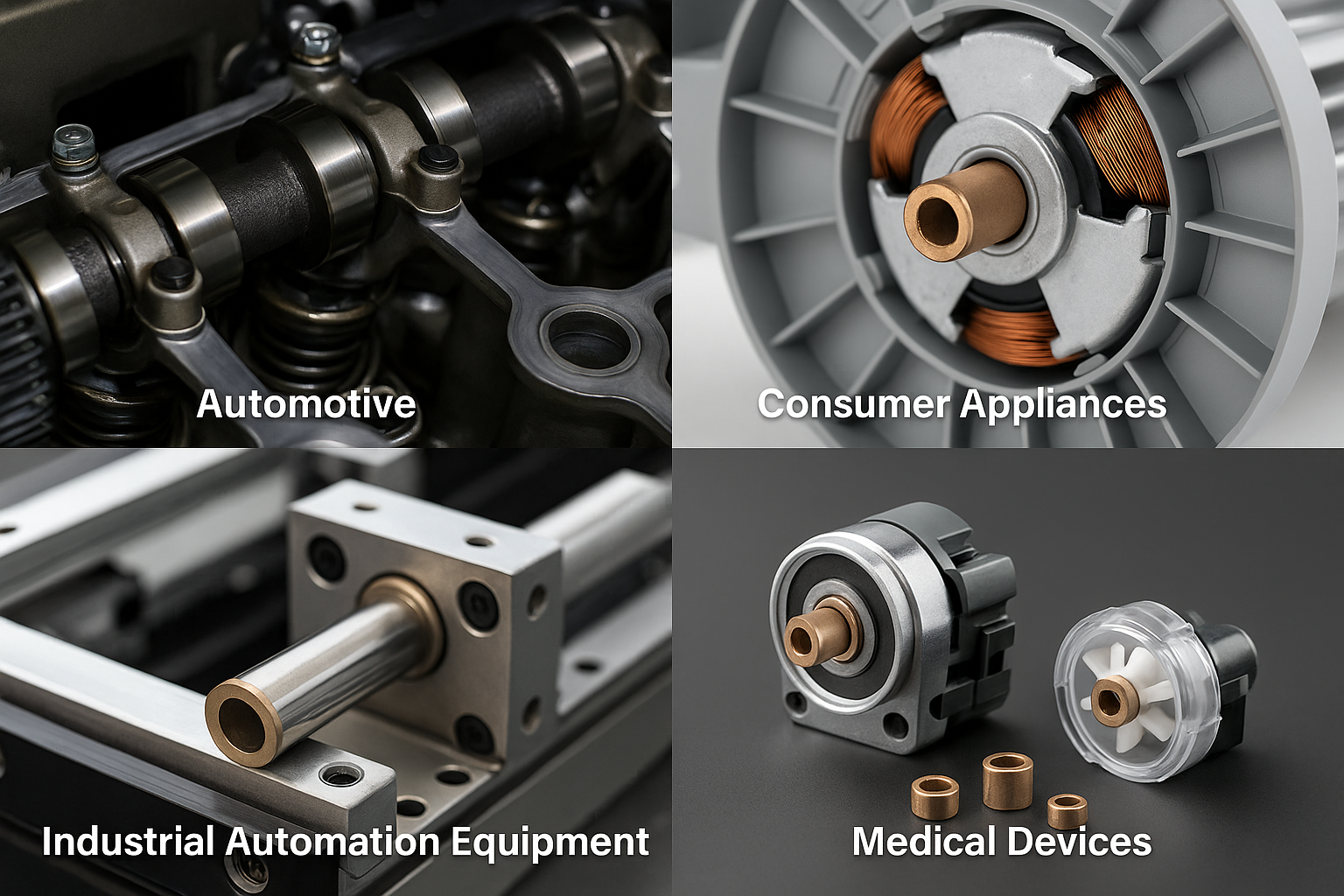
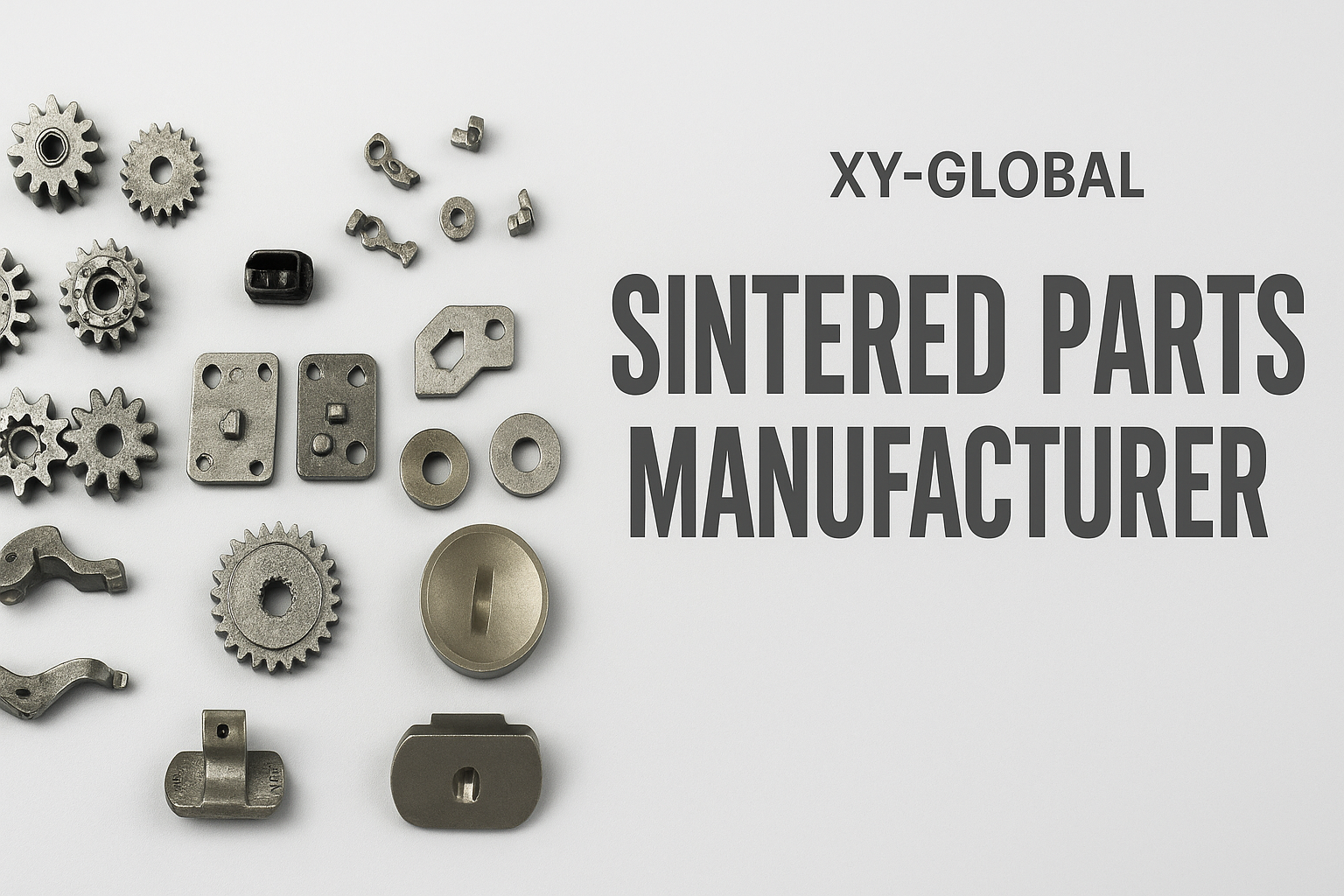
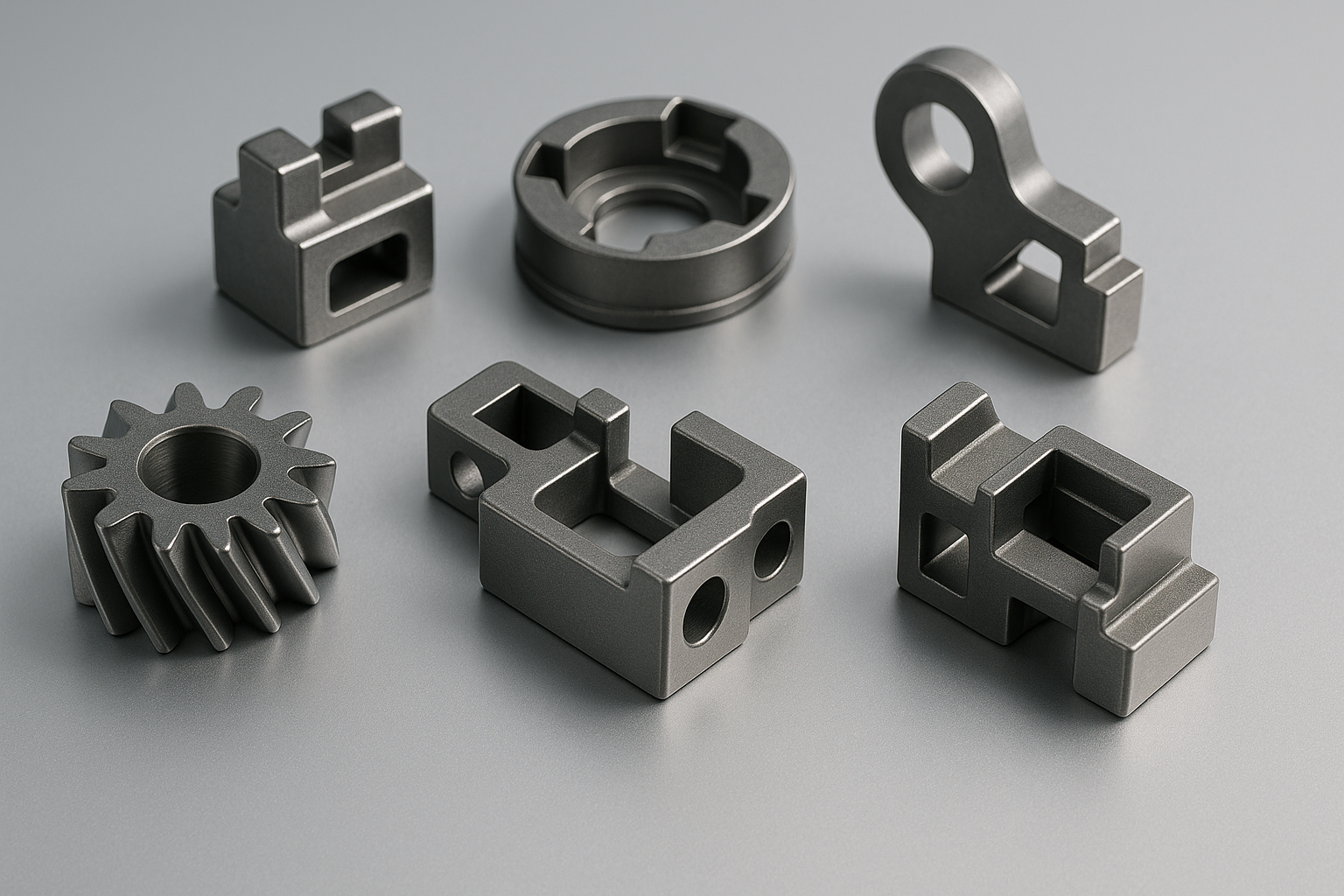
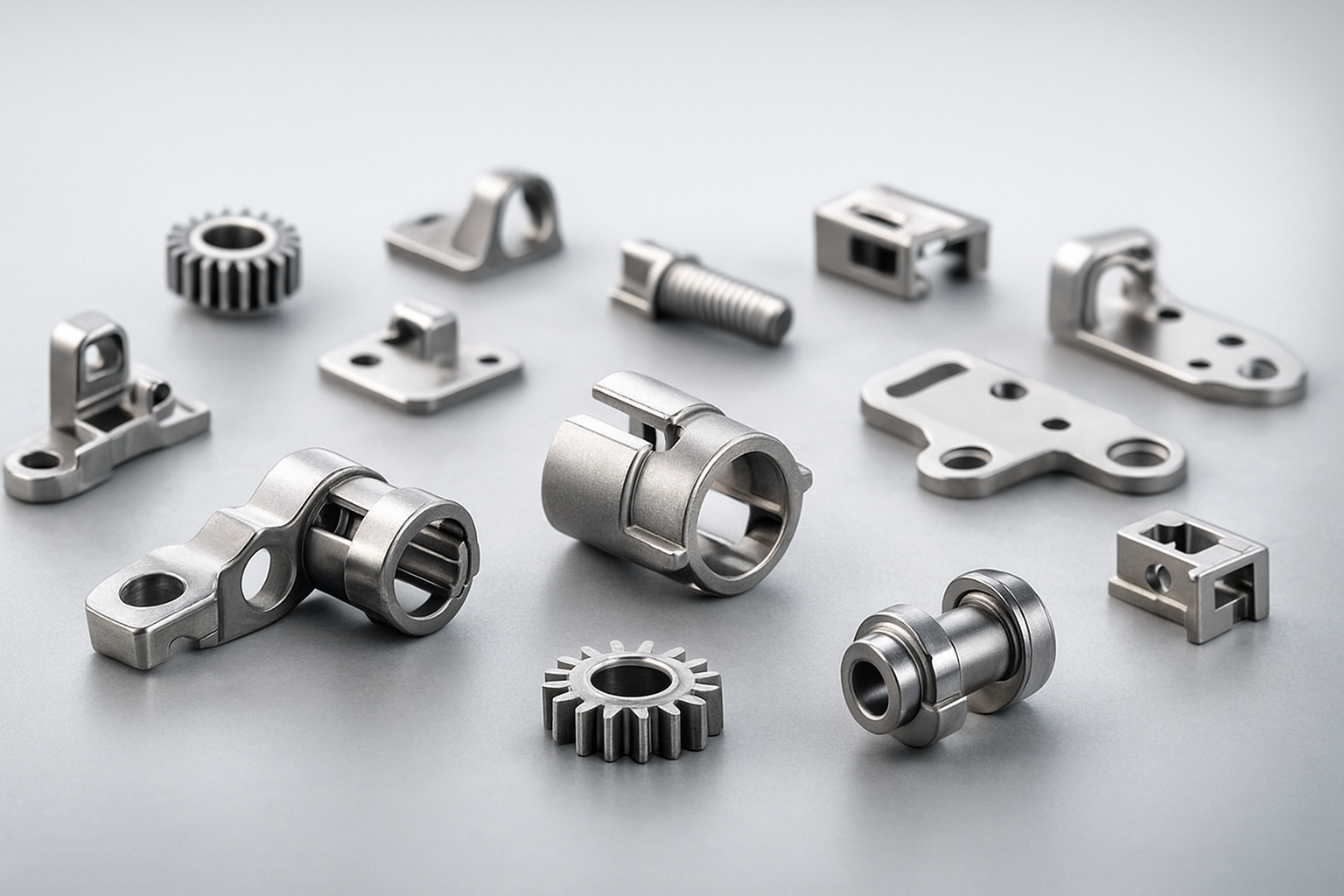

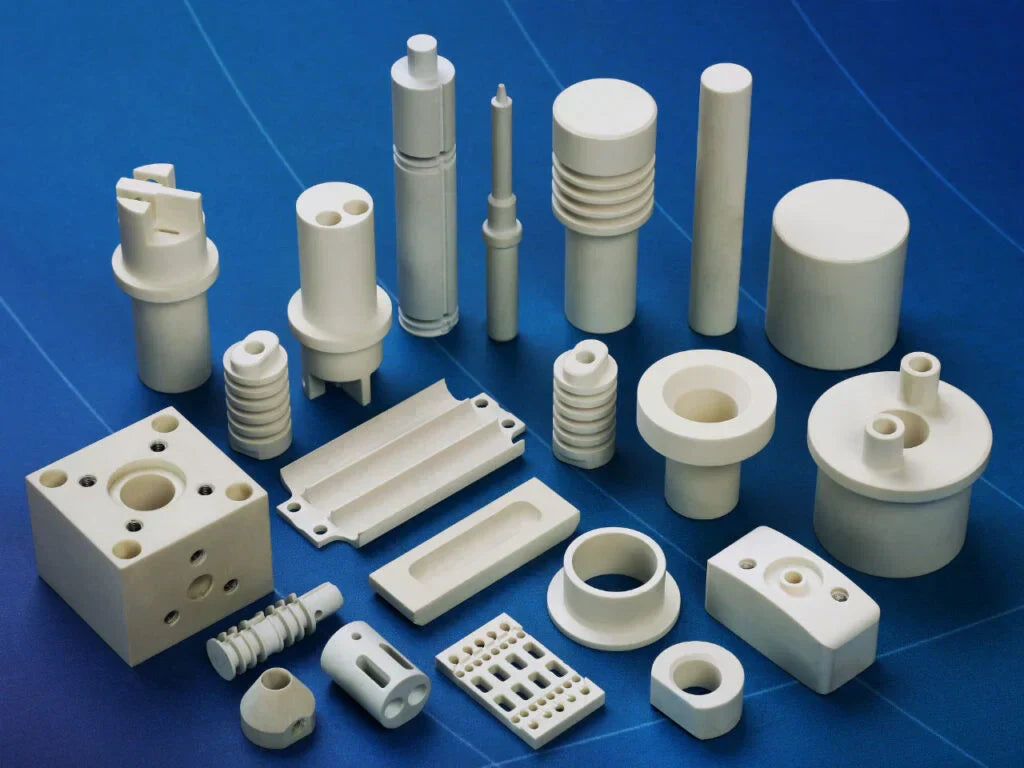
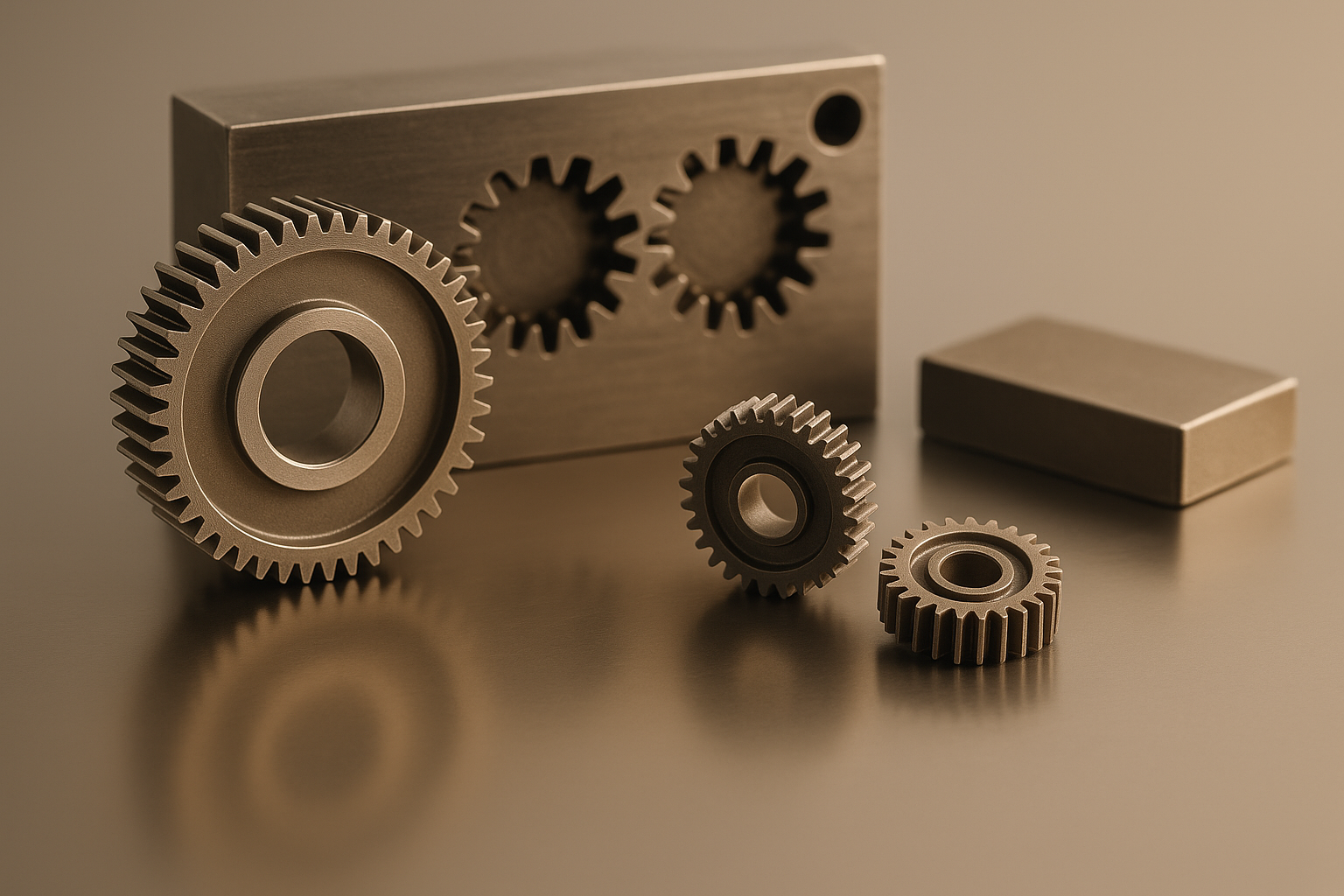
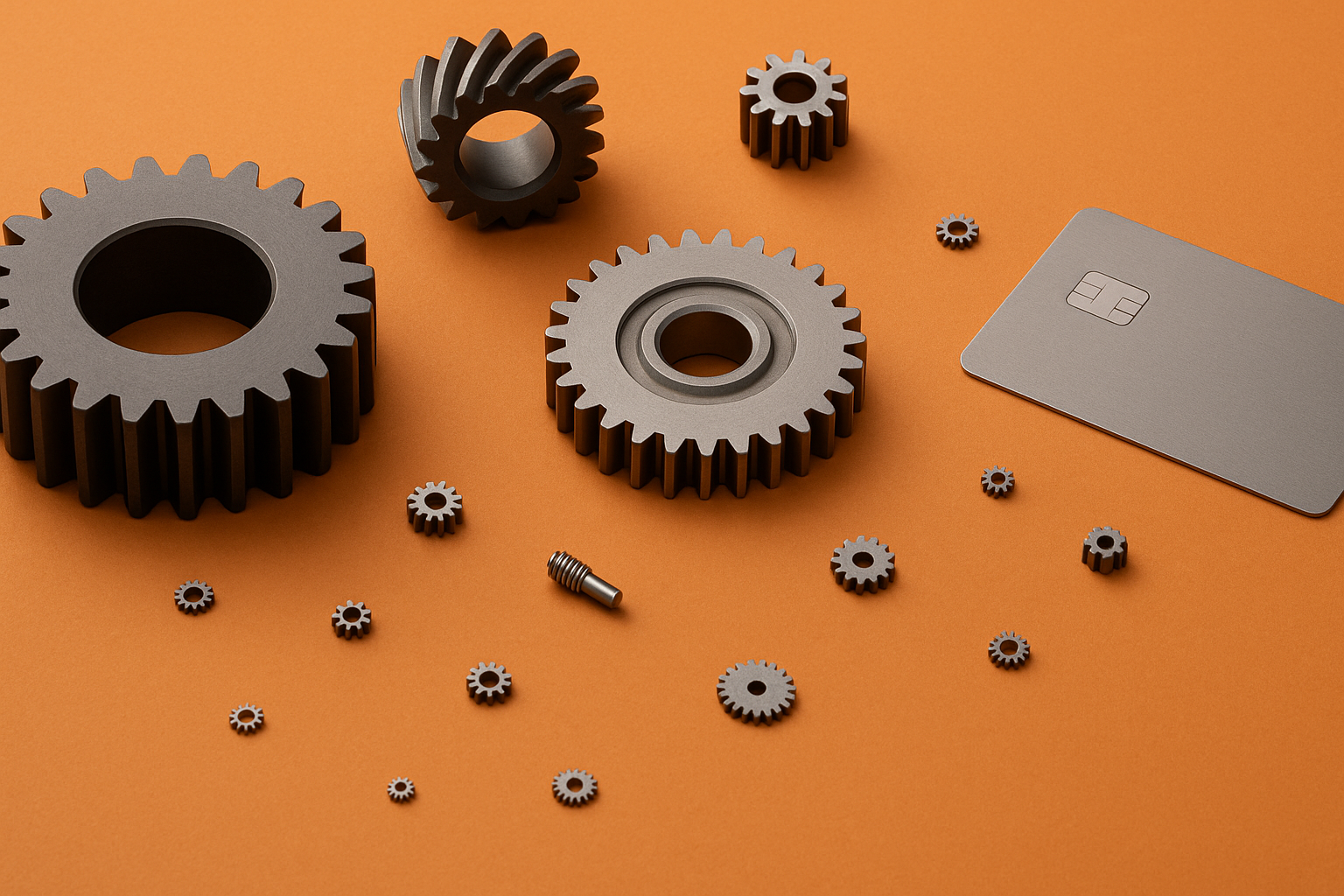
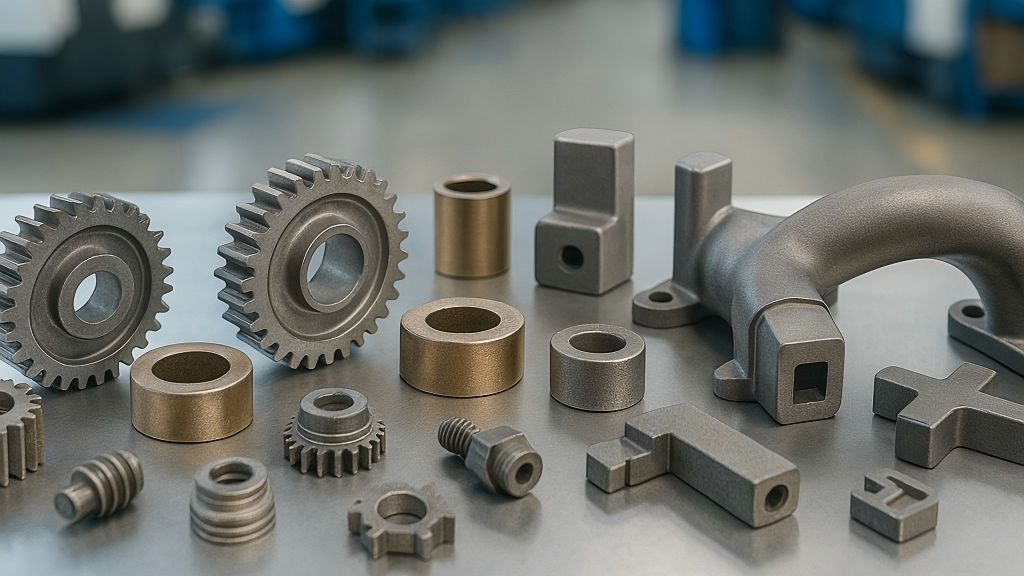
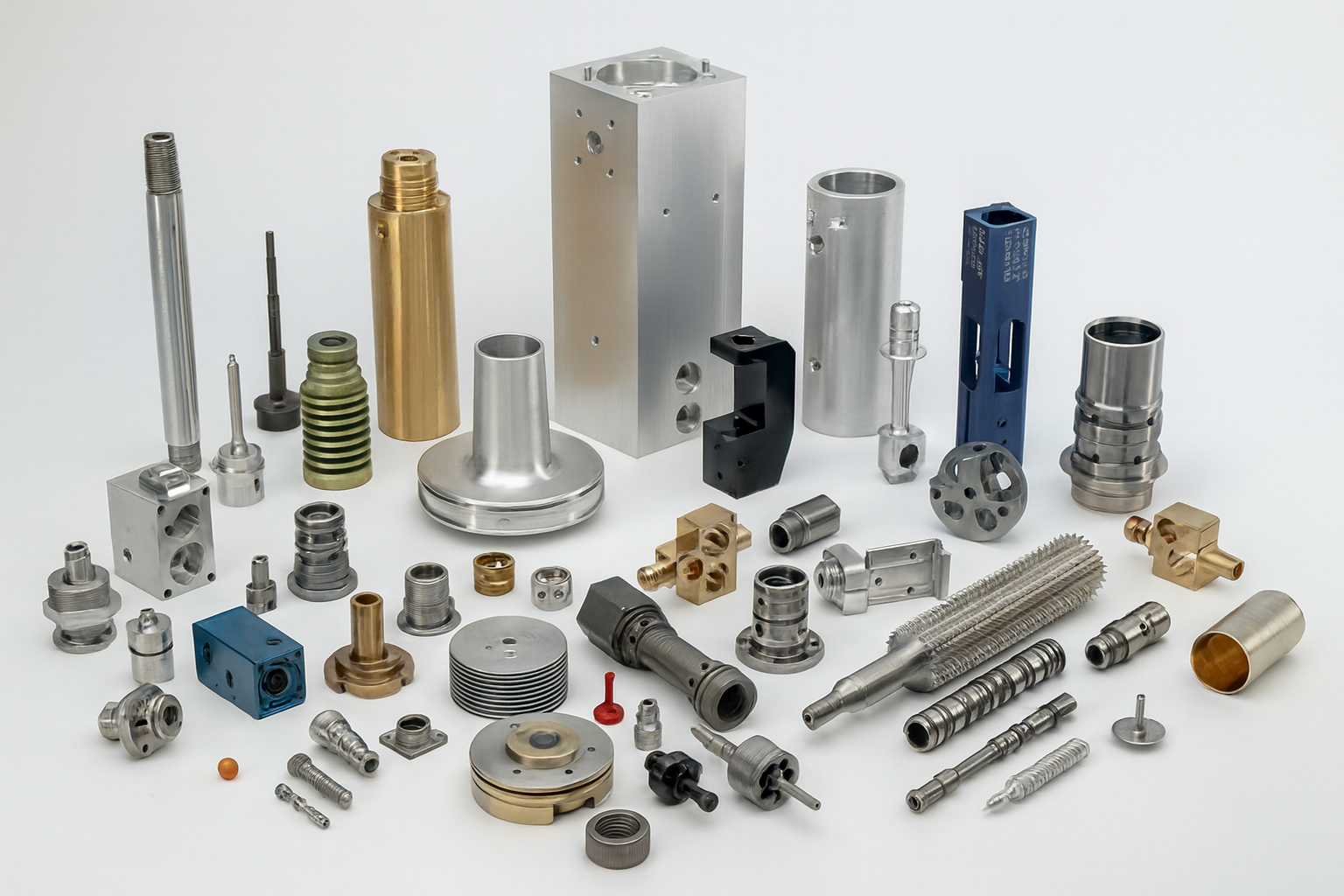
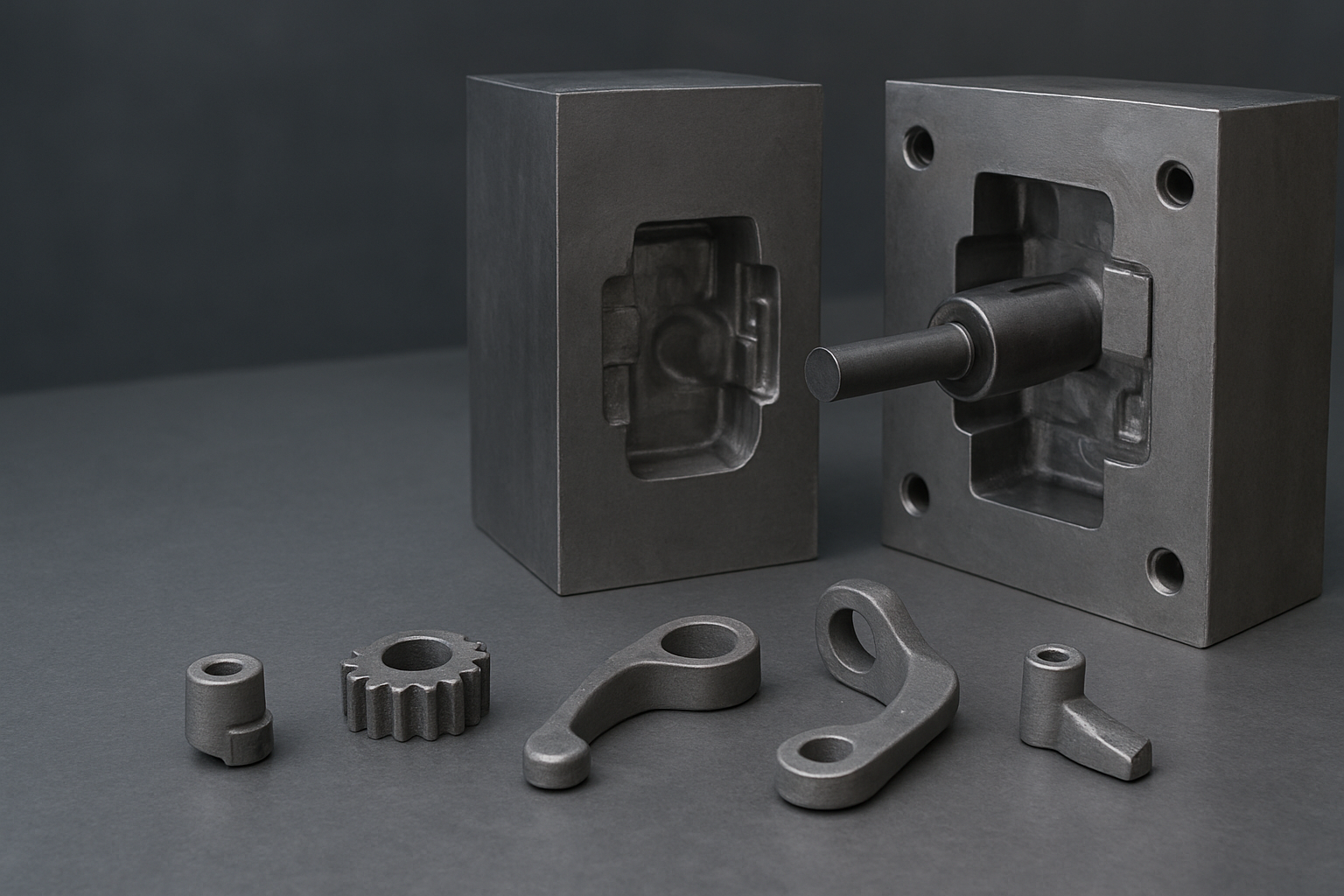
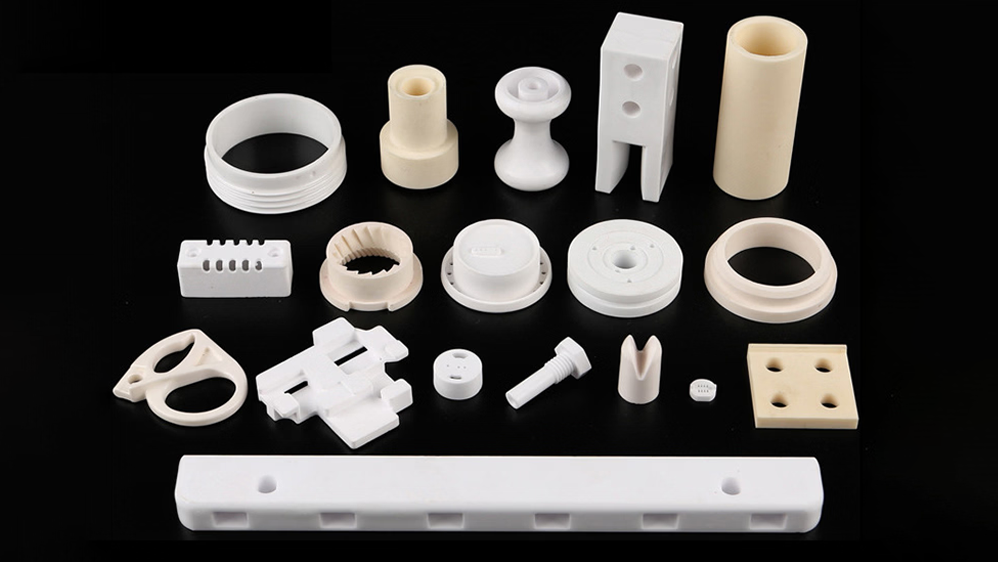
Compartir:
¿Qué es un rodamiento de pulvimetalurgia?
Metal Sintering — A Practical Guide to Precision and Performance